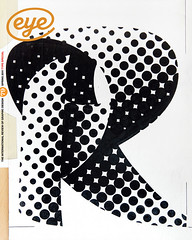Spring 2011
Fanfare for the common man
Gerd Arntz: Graphic Designer
Edited by Ed Annink and Max Bruinsma, 010 Publishers, €34.50This book is neither biography nor visual monograph but an entertaining compilation that throws additional light on the principal illustrator behind Otto Neurath’s Isotype. Neurath recruited Arntz (1900-88) in 1926 after seeing his woodcuts: satirical or poignant images with a left-wing point of view, depicting scenes of striking labourers or the class-divided occupants of a three-storey house.
Arntz’s images, later made as linocuts, were simple enough to bear reproduction at small sizes, yet nuanced enough to give the Isotype diagrams richness and humanity. He could convey the resigned slump of an unemployed worker, the assumed superiority of a capitalist or the curves of a kept woman in a few confident lines. Later, more complex compositions – a rickety Third Reich pyramid, an illustration for Candide – retain this literally iconic style.
The ‘Visual statistics’ section shows the Isotype charts for which he is best known, including diagrams of economic activity, Dutch lifespan and the subjects of Rembrandt’s paintings (see Eye 78).
Paul Mijksenaar and Gert Dumbar are among the contributors to the ‘Inspired by Gerd Arntz’ section, which includes an extract from Erik Spiekermann’s Eye 73 review of The Transformer (Hyphen Press) and a provocative graphic by Mieke Gerritzen. Designer Nigel Holmes, in his illustrated article ‘Pictograms’ (originally published in Information Design Journal no. 10 (2), 2000-01), compares pictogram design to jazz: ‘Note that what Arntz left out was as important as what he included. […] Thelonious Monk left spaces in his music, which the listener naturally filled in, just as we do when looking at a drawing by Arntz.’
The second half of the book is devoted to a selection of the 4000 symbols and small illustrations that Arntz drew for Isotype and others, from simple outlines – a frog, a train, an apple – to complex concepts and groups of people.
The book’s designers, Ontwerpwerk, have chosen to display most of the best known and most appealing icons, often enlarged. They have also devised a free, highly addictive ‘memory game’ app for the iPhone, which uses 250 of Arntz’s icons.
There are places where the book feels a little bulked out, with big body text and lots of white space, but there is much that repays close reading, such as a moving typewritten letter from Neurath, describing his plans for Arntz’s release from a prisoner-of-war camp in 1945.
Isotype-derived symbols are so familiar that it is easy to overlook Arntz’s highly personal contribution to their development. The life and work documented in Gerd Arntz: Graphic Designer tell us more about the man behind the icon. John L. Walters
First published in Eye no. 79 vol. 20 2011
Eye is the world’s most beautiful and collectable graphic design journal, published quarterly for professional designers, students and anyone interested in critical, informed writing about graphic design and visual culture. It is available from all good design bookshops and online at the Eye shop, where you can buy subscriptions and single issues.

